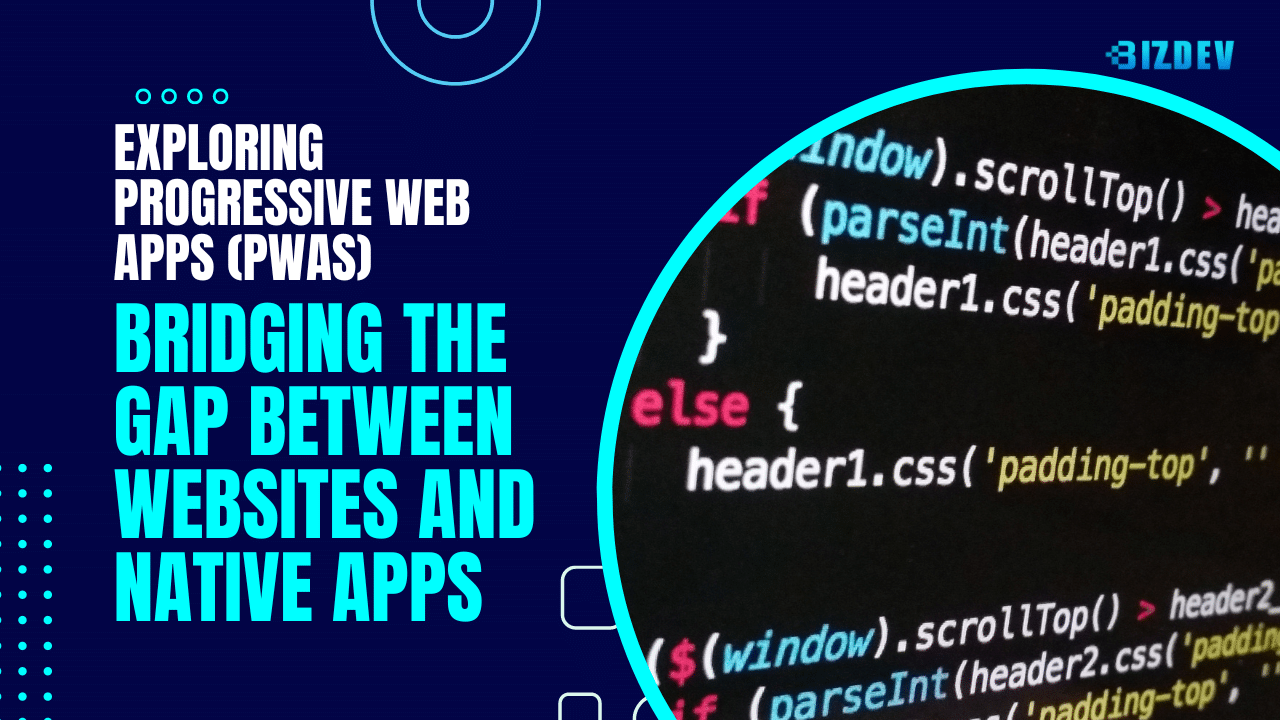In the ever-evolving digital landscape, Progressive Web Apps (PWAs) have emerged as a powerful solution that combines the best of both worlds: the accessibility of websites and the functionality of native apps. As a Bizdev company, understanding PWAs is crucial for staying ahead in the tech game. Let’s dive into what PWAs are and why they matter.

What Are Progressive Web Apps?
A Progressive Web App (PWA) is an application built using standard web technologies (HTML, CSS, and JavaScript) but designed to provide a user experience similar to that of a native app. Unlike traditional websites, PWAs offer the following advantages:
- Cross-Platform Compatibility: PWAs run seamlessly on various operating systems and devices from a single codebase. Whether your users are on Windows, macOS, Android, or iOS, they can access your PWA without any platform-specific limitations.
- Installation Without Hassle: PWAs can be installed directly from the web, just like native apps from an app store. Users don’t need to visit an app store, download large files, or clutter their devices. PWAs are lightweight and easy to install, making them a user-friendly choice.
- Offline Functionality: PWAs work even when the user is offline. They cache essential resources, allowing users to access content and perform tasks without an active internet connection. Imagine a news app that loads articles even when you’re on a flight or in a subway tunnel.
- Responsive Design: PWAs adapt to different screen sizes and orientations. Whether users access your app on a smartphone, tablet, or desktop, the experience remains consistent and user-friendly.
- Push Notifications: PWAs can send push notifications to users, just like native apps. Keep your audience engaged by sending timely updates, reminders, or personalized messages.
Key Features of PWAs
- Service Workers: These background scripts enable offline functionality, caching, and push notifications. Service workers intercept network requests and serve cached content when needed.
- Web App Manifest: A JSON file that defines how the app should behave when installed. It includes metadata like the app’s name, icons, and display mode (standalone, fullscreen, or browser).
- Responsive Design: PWAs use responsive layouts to adapt to different devices and screen sizes. Whether it’s a mobile phone or a large desktop monitor, the app looks and works well.
- Secure Connections (HTTPS): PWAs require HTTPS to ensure data security and prevent unauthorized access. Secure connections are essential for service workers and other PWA features.
Real-World Examples
Several companies have successfully embraced PWAs:
- Twitter Lite: Twitter’s PWA offers a fast, lightweight experience for users with limited data or slower connections. It loads quickly, even on 2G networks.
- Pinterest: Pinterest’s PWA allows users to save pins, browse boards, and discover new content—all without installing a native app.
- Starbucks: The Starbucks PWA lets customers order coffee, find nearby stores, and manage their rewards—all from their browsers.
Why Invest in PWAs?
- Cost-Effective: PWAs eliminate the need for separate development for different platforms. Maintain one codebase and reach a broader audience.
- Improved User Engagement: With offline capabilities and push notifications, PWAs keep users engaged and coming back for more.
- SEO Benefits: PWAs are discoverable via search engines, unlike native apps. They improve your online visibility and attract organic traffic.
- Faster Load Times: PWAs load quickly, reducing bounce rates and improving user satisfaction.
Conclusion
Progressive Web Apps bridge the gap between websites and native apps, offering a delightful user experience across devices. As a Bizdev company, consider PWAs as a strategic investment to enhance user engagement, reduce development costs, and stay competitive in the digital arena. Explore the world of PWAs – it’s where the future of web development lies!
